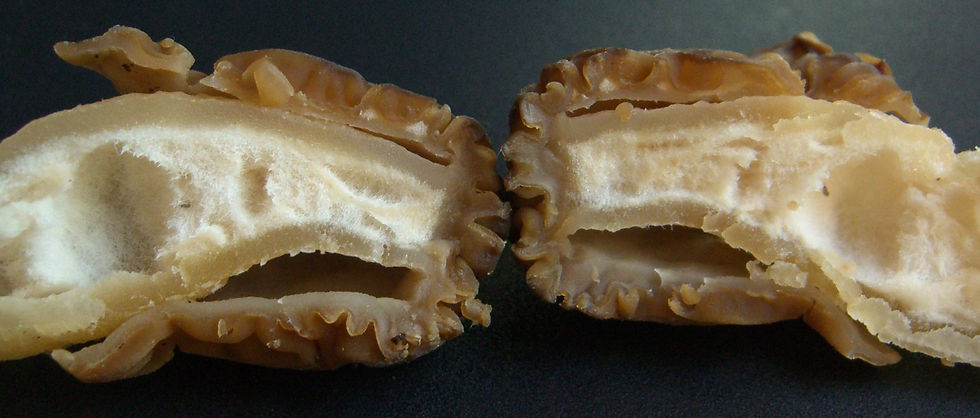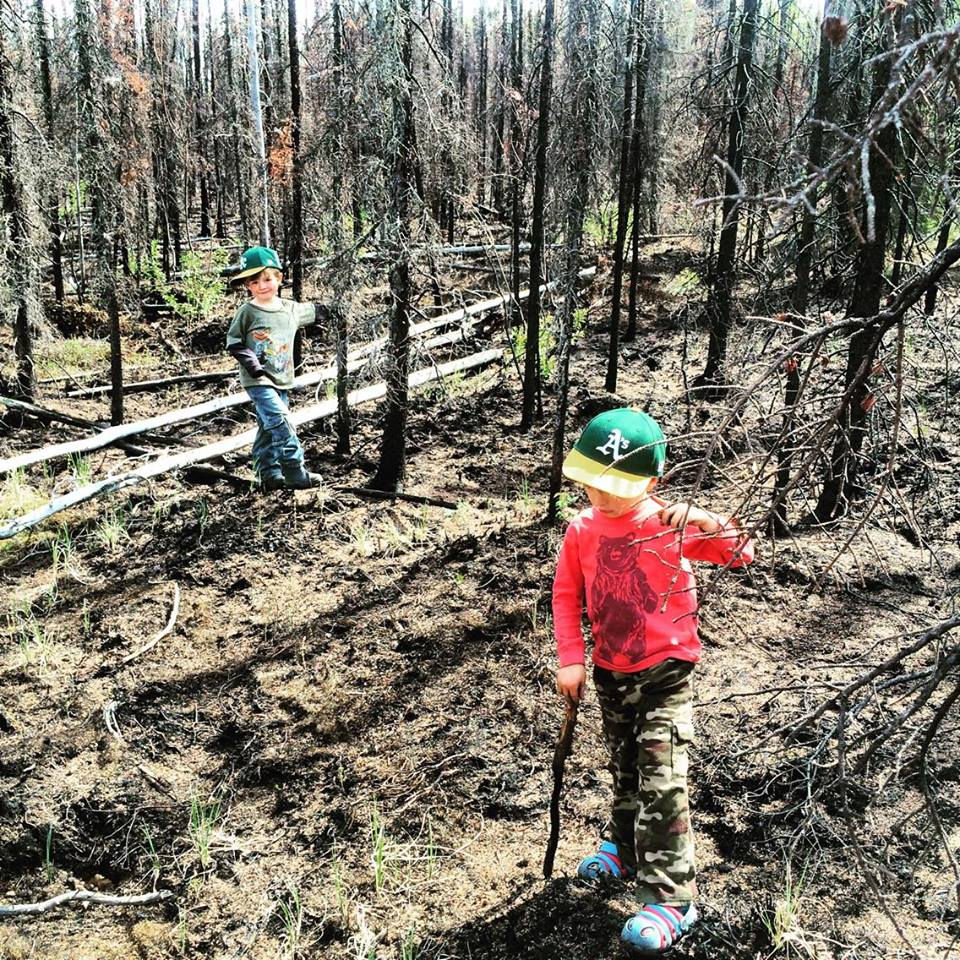Morel Hunting in Alaska
- Lila Little
- May 27, 2016
- 4 min read

Morels are low in calories and fat and high in protein, antioxidants, vitamins, and minerals (including D, E, selenium, niacin, and copper). The question is not really why to eat morels, though... It's more like, "How do I find enough of them?!?" ...because once you try one, you will want another.
Identifying Morels
Morels are sponge-like brown, black, or tan mushrooms anywhere from 1-6 inches tall.


The bottom of the cap is attached to the stem, and the cap is covered in ridges and pits (but not wrinkled and brain-like). The stem has little bumps both inside and out, and on most morels, the cap is longer than the stem.

When cut lengthwise, the morel is hollow from the bottom of the stem to the cap.

There are a couple of toxic false morels you want to avoid. The early morel has a cap that is not actually connected to the stem and can be easily pulled off. This mushroom is also not hollow like the true morel.


The beefsteak morel is wrinkled and brain-like as opposed to pitted and ridged, and is often larger.


Be sure to consult a mushroom field guide and take an experienced mushroomer with you on your first couple hunts.
When to Hunt and What to Bring
Mushroom hunting is kind of like king fishing in that it requires time and patience. It can be boring, at times even downright depressing, but once you're in that spot, you'll be hard-pressed to find anything more exciting.

See how excited she is?!
Go on a spring day when the temperatures are between 60-80 degrees and you don't have to be anywhere. Make sure you bring plenty of food. When you find that spot (it might take three-or-so stops), you're not going to want to leave, no matter how hungry your preschooler is. Pack boots, pants, and long sleeves for everyone in your party, even if it's a warm day. Mushroom hunting is a great outdoor activity for families, but it often requires minor bushwacking, and who wants to listen to a bunch of kids (or husbands) whining about getting scrapped up, ash-covered, bug-bitten, or muddy when it can be avoided?!

You will most likely also want bug spray, extra clothes, baby wipes, and plenty of water. I am writing you this seemingly basic list because I have gone without these things before... and regretted it.
Where to Hunt
Where to hunt morels is a bit ambiguous. Morels grow where the spores fall, cross-polinate, and germinate. If there is a recently burned, logged, torn-up-by-large-equipment, or otherwise disturbed area near you, check here first. Major events like these cause mass dispersal of spores, which makes for good mushroom hunting in the following years. The North American Forest Fire Incident Display System provides detailed burn maps around the country. Googling fire maps of your area will also probably yield good results.


Morels require a symbiotic relationship with another species to survive like other fungi, so it is common to find them growing at the base of trees, in mossy conifer and hardwood forests, and out of fallen dead trees.

Morels like sunshine - which is why you are always hearing "south-facing slopes" in conjunction with mushroom hunting - and moist soil. Heading out a day or two after a good rain is a big plus. You can also often find them growing near rivers, creek bottoms, or other places with loamy soil, or soil with a good mix of clay, sand, decaying matter, and calcium and/or lime.

Choose an area to hunt and cover ground quickly but carefully until you find one. Other mushrooms and/or "blown out" morels are good signs that the mushroom you are looking for might be nearby.

Once you find a morel, stop and search the area carefully. Other spores may have followed the same wind pattern as the spores that created the mushroom you just picked, and the ecosystem in that area may be particularly conducive to growth. Morels often grow together for these reasons, and growth patterns in the area you are hunting will become apparent if you look for them.


Cleaning and Storing Morels
If you want to store your morels for several days, put them in a paper bag in the fridge without rinsing them. Once you rinse them, they will deteriorate, so it's best to do this when you are ready to eat them.

Both the cone-shaped body and the stem are delicious. Trim the stem if it's particularly dirty, woody, or dried out. Rinse the rest of the mushroom quickly in cold water and use an old toothbrush to gently clean the dirt from between the folds. Dirt and sand can sometimes collect in the hollow center of the larger mushrooms, so you may want to slice these in half before cleaning.
If you have a lot of morels, you can dry them in your dehydrator and store them until you are ready to rehydrate and cook them!

Cooking Morels
Always cook morels before eating. They are crazy delicious simply grilled or sauteed in butter or oil and seasoned with salt and pepper. This is my favorite served with eggs or steak because you can taste the full flavor of the mushroom. They're also good battered and fried, chopped in fritters, on pizza, or in wine sauce or cream sauce with pasta.

Happy mushrooming!

The morning after.



















Comments